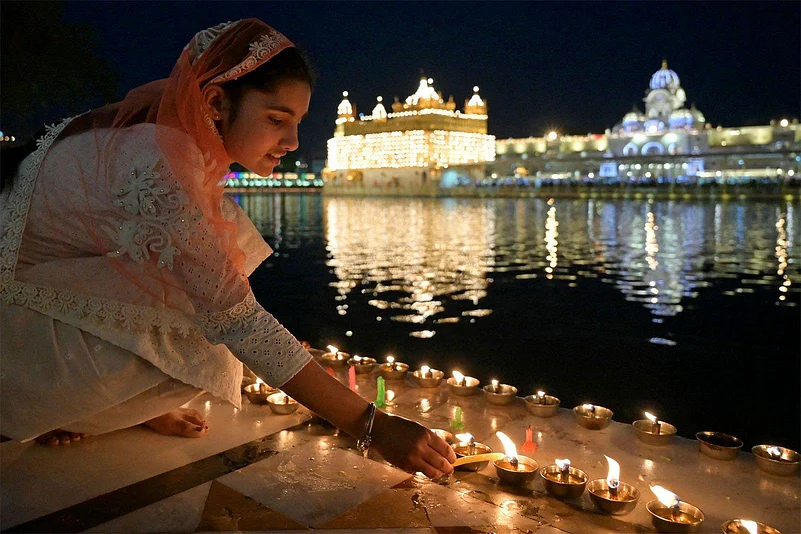Baisakhi stands as a major event throughout North India, especially across the Punjab and Haryana states. This religious festival, celebrated on April 13 or 14, is marked by traditional observances tied to both agriculture and the region라이브 바카라 faith traditions. To the farmers, Baisakhi represents an essential day of recognizing gratitude because they spend it expressing thanks to the earth for their successful harvest.
The Arrival of the Harvest

During springtime, the fields sway slowly to the breezes while their crops reach full maturity. The landscape displays this picture in springtime as Baisakhi arrives. During Baisakhi, farmers achieve their goal after months of agricultural dedication because their winter wheat crops reach harvest readiness. During this time, farmers experience fulfillment because they receive the rewards of their farm work that began months earlier. Farmers feel a deep sense of fulfillment as they witness the fruits of their labor. The golden wheat fields stand as a symbol of their success and a promise of sustenance for their families and communities.
A Time for Gratitude
Through Baisakhi harvests, the farmers experience an intense gratitude because of what the occasion represents. During this occasion, farmers express gratitude toward Earth along with the Sun and Rain and the divine powers that granted nourishment to their cultivated produce. Through this moment, we gain awareness of how all life systems connect, and we need the gifts bestowed by nature. Through prayers and rites, farmers demonstrate their gratitude for obtained blessings while requesting divine gifts for the coming future. Farm owners demonstrate their reverence for abundant harvests by giving the initial crop-cutting to God through religious offerings known as “bhog.”
Celebrations and Festivities
The celebrations of Baisakhi are a vibrant display of joy and community spirit. People dress in their brightest traditional attire, often featuring the vibrant colors of yellow, orange, red, and green, reflecting the energy of the harvest season. The air is filled with the rhythmic beats of the dhol as men perform the energetic Bhangra dance, a staple of Punjabi culture, expressing their happiness and vitality. Women, in their colorful clothing, participate in Gidda, another traditional dance form, further enhancing the festive atmosphere with their grace. These dances are not just entertainment; they are an embodiment of gratitude, a way to celebrate their connection to the land.
Large fairs, or "melas", are a common feature of Baisakhi celebrations. People come together to enjoy a variety of activities, including traditional music and dance performances, games, and food stalls serving local delicacies. It라이브 바카라 a time for communities to bond, share their happiness, and participate in the cultural traditions that tie them together. The aroma of traditional sweets and savory dishes fills the air, further enhancing the festive atmosphere.
A Religious Significance
While Baisakhi is deeply rooted in agricultural practices, it also holds significant religious importance for the Sikh community. It commemorates the founding of the Khalsa Panth in 1699 by Guru Gobind Singh, the tenth Sikh Guru. This event is a cornerstone of Sikh history and identity. Sikhs all around the world mark this day with special prayers, visits to gurdwaras, and community gatherings. Many choose the day of Baisakhi to be baptized into the Khalsa. Special celebrations are held at Anandpur Sahib, the birthplace of the Khalsa order, as well as at the Golden Temple in Amritsar. The day's religious observances reinforce the values of courage, equality, and service that are central to the Sikh faith.
Baisakhi Beyond Punjab
While it's most prominent in Punjab, the spirit of Baisakhi as a harvest festival is seen in other parts of India as well. The essential elements of gratitude towards a fruitful harvest along with positive hopes for the future exist in every farming holiday despite its distinct names and customary practices. Several customs and dances, along with distinctive rituals, are used by different parts of the population to celebrate their unique cultural heritage throughout the country. Baisakhi celebrations occur at the solar new year in the Indian calendars, leading to its increased meaning as a period for new beginnings.
More Than Just a Celebration
Religious events and harvest festivals represent only a portion of what Baisakhi embodies. The celebration reminds us about how human beings profoundly connect with their environment. Baisakhi pays tribute to agricultural labor while celebrating natural earth abundance and underlining the essence of communal unity. This occasion enables us to meditate on life's blessings along with celebrating happiness. Baisakhi helps people discover value in ordinary aspects of life, including nourishment and fellowship throughout it. It라이브 바카라 a time to come together, united in celebration and gratitude for the bounty that sustains us all. So, Baisakhi, in its essence, is a celebration of life itself, from the sprouting of seeds to the gathering of the harvest, a beautiful cycle of hard work, appreciation, and community spirit.
Follow 바카라 Experiences:
| | |














